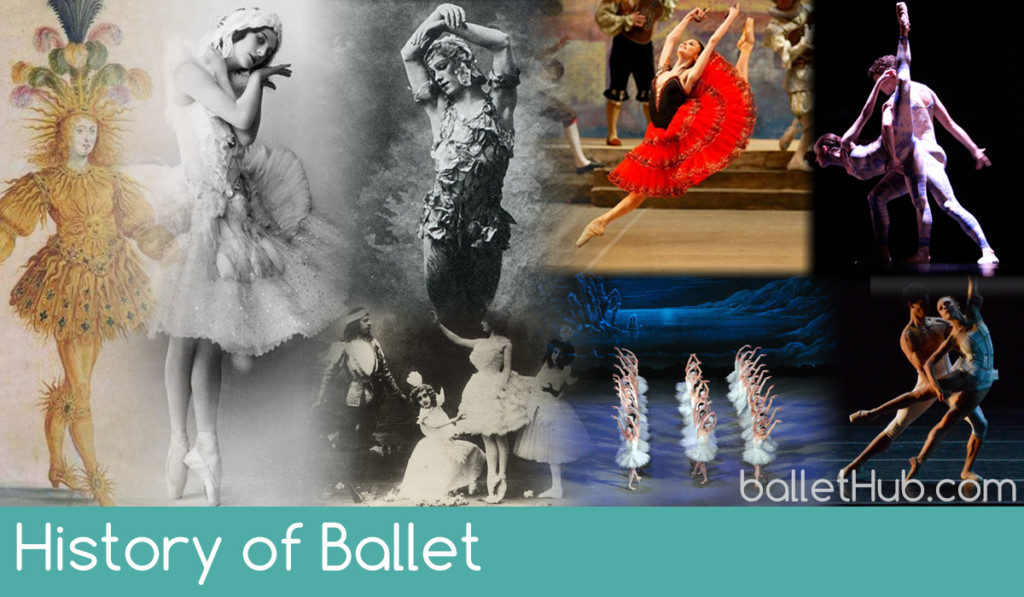The art of ballet has been loved for centuries, taking on various forms as the decades pass. What started as a dance for the nobles, ballet would eventually become an art for audiences all over the world to see and be entertained by.
The history of ballet spans several centuries, so let’s take a look and see how ballet first began, its huge growth, and what it looks like today!
The Very Beginnings of Ballet
When you ask most people, Where did ballet begin? The usual reply is “France, of course!” However, that’s not entirely true! Ballet actually first began in the Italian Renaissance courts during the 1400’s. It was first a type of dance, with its “classical” style and reserved and dignified approach, performed for noblemen and noblewomen at large celebrations, often times weddings.
During its early years, ballet looks nothing like it does today. There were no tutus or pointe shoes yet, and the dancers would wear regular, fashionable clothing as a “costume.” The ballets were very similar to court dances, even encouraging audience members joining in toward the end.
Ballet Introduced to France
Sometime during the 1500s, an Italian noblewoman and patron of the arts by the name Catherine de Medici married King Henry II and arranged for ballet to be performed in the French court. This is when ballet really started to become recognized, so we all may have Catherine de Medici and her influence as a royal to thank! She would throw festivals, called “ballet de cour”, that became very popular and included not just ballet, but also costumes, song, music and even poetry.
Another huge leap for ballet was a century after it’s introduction to France, by King Louis XIV (the Fourteenth). Having grown up seeing ballet, King Louis XIV was a passionate dancer himself and is responsible for both popularizing and creating a standard form of ballet. This is why most people think ballet was created by the King of France, but as you’ve just read, ballet began in Italy and was standardized in France!
Thanks to his passion for ballet, a technique and syllabus was formed which soon made ballet a dance that was performed by just about anyone to an art requiring disciplined training by professionals.
When it comes to ballet, its hard to imagine it as a type of step done by amateurs at parties. Imagine the dances of today at clubs… this was ballet a one point! Thanks to an Italian noblewoman’s love for ballet, King Louis was able to grow up around ballet and pursue it himself, allowing him to later fund and popularize it into the technique and art that we see performed on stages today.
First Academy of Ballet
The very first academy of ballet was opened in 1661 in France, thanks to King Louis XIV, and was called the “Académie Royale de Danse.” Pierre Beauchamp, the king’s dance teacher, created the five basic positions of ballet for the feet and arms.
If you’re taking or have seen a ballet, you’ll likely know these same positions are used today still and are the basis for many ballet’s more advanced steps. Beauchamp would later become the director of first academy of ballet in the world, a position held from 1680-1687.
Popularity of Ballet Growing in Europe
During the 1600s, the French Court was often seen as the most fashionable and trend-setting of all the european courts. This became very important for the expansion of ballet, because as the popularity of ballet grew in the French Courts, it trickled out to the courts in Germany, Spain, Portugal, Poland, and many others.
The first professional ballet companies and troupes began forming and touring Europe to perform ballets for royalty and aristocratic audiences.
Ballet History in the 19th Century
The history of ballet gets very interesting during the 1800s due to significant change and growth from new ideas. The focus became mostly on the ballerina, even having females portray male roles. As the 19th century was a period of significant social change, the themes of new ballets changed too, moving away from the royal and aristocratic and into romantic ballets.
Pointe Shoes
Several ballerinas also began experimenting with dancing en pointe, bringing pointe shoes to ballet in the early 1820s. In 1832, La Sylphide was created to showcase Marie Taglioni’s talents dancing en pointe. This was significant because up until then, pointe shoes were seen as a type of ungraceful stunt.
Taglioni’s performance proved that a ballerina could combine graceful arm movements while maintaining poise and masking the difficulty of pointe work. This undoubtedly brought a new sense of allure and excitement to ballet, fostering admiration for the obvious difficulty of dancing on your toes. The pointe shoe would soon become an icon of both graceful movement and technical skill.
The Classical Ballets
While both Italy and France were very important in ballet’s early years, it truly blossomed in Russia and Denmark during the mid to late 1800’s. During this time, famous choreographers such as Marius Petipa, Enrico Cecchetti, August Bournonville and Jules Perrot, were creating what would eventually be known as the great story classical ballets.
Petipa, arguably the most famous of classical ballet choreographers, created La Bayadère (1877), The Sleeping Beauty (1890), the revival of Swan Lake (1895) and The Nutcracker (1892), among others. Jules
The Tutu
Another icon of ballet today, the classical ballet tutu, was also created during the 19th century from the desire to highlight and bring more appreciation to a ballerina’s difficult leg and foot work. Much like today, the classical tutu looked like a short skirt, made to stick out by using layers of tulle and crinoline (a stiff fabric made originally to give volume for petticoats). Jules Perrot created Giselle alongside Jean Coralli, with the ballet’s premiere in Paris, France in 1841.
Ballet Companies
The idea for ballet companies in Europe also grew in popularity, with a new generation of dancers and teachers forming companies that are still performing today. These include the Vienna State Ballet, the National Theatre Ballet in Prague, the Kiev Ballet, and the Hungarian National Ballet.
Collaboration between companies, operas and acting theatres was also very common, allowing composers and choreographers to create works with huge casts.
20th Century Ballet History
Ballet again saw great change in the 1900s, mostly with the advent of abstract and contemporary ballets. The 20th century is also credited with the spread of ballet into more countries, including the United States, which until then, had very little exposure.

